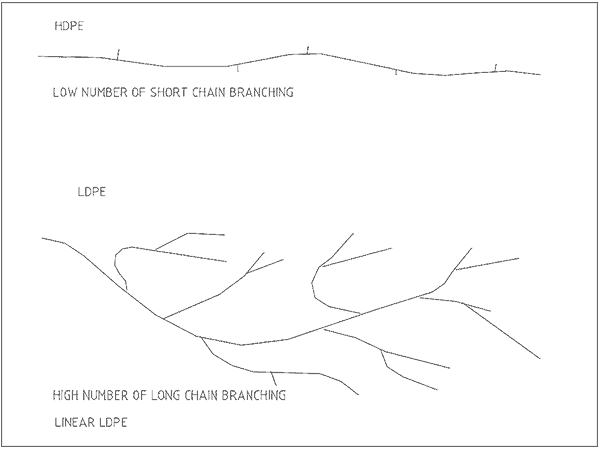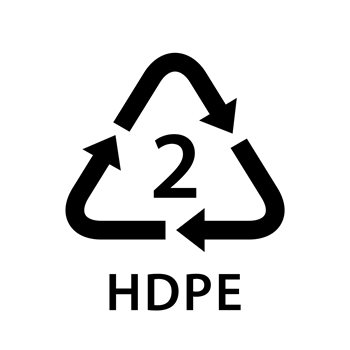High Density Polyethylene (HDPE)
Table of Contents
What is HDPE
High density polyethylene is a branch of polyethylene plastic. Different from LDPE, HDPE possesses a more crystalline structure. In addition, it does not have a branches which enables a more compressed molecular structure thus giving HDPE a higher density of 0.93-0.97 g/cm3 , making it more durable and rigid when compared with LDPE. HDPE also have a higher melting point of 120-140°C [1].
Figure 1: Polymer chain of polyethylene [2] |
|---|
Advantages and Disadvantages
HDPE Advantages | HDPE Disadvantages |
|---|---|
|
|
HDPE Chemical Compatibilities
A common HDPE pipes are capable of operating continuously at the temperature of -40°C to +60°C. It can withstand a maximum pressure of 20 bar depending on operation temperature and sizing [3].
Table of LDPE's chemical properties [1]
| Element | HDPE's corresponding resistance |
|---|---|
| Most Solvents | Excellent |
| Alcohol | Good |
| Acid | Good |
| Oil | Moderate |
| Aliphatic | Poor |
| Aromatic | Poor |
| Halogenated Hydrocarbons | Poor |
Applications of HDPE Pipes
When compared to LDPE pipes, HDPE pipes sees a lot more industrial use due to its larger size, abrasion and corrosion resistance. In additions, HDPE can be heat fused to produce a leak free joint that can transport hazardous chemicals without the need for thrust blocks or restraint harness.
Some industries currently using HDPE pipes include[4]:
- Petrochemical
- Power Plants
- Mining
- Liquefied Natural Gas
- Fertilizer
- Electrical and communications conduit
- Hazardous Waste
HDPE Sizing
By industrial standard, the PN represent the Pressure Nominal, which is the pressure in bars the pipe can support with water at 20 oC. For instance, a PN 4 HDPE pipe can withstand a maximum pressure of 4 bars while operating with water at 20 oC.
The SDR stands for the Standard Dimension Ratio, which is the ratio of the pipe diameter to wall thickness. For instance, SDR 41 represent that that the outside diameter of the pip is 41 times the thickness of the wall [4].
Figure 2: A Sizing Chart of HDPE from Zeep Construction [5] |
|---|
HDPE Recycling
HPDE cannot be recycled together with the other polyethylene. It is given the recycle number of 2.
Figure 3: Recycling symbol of HDPE [6] |
|---|
Contributors:
| User | Last Update |
|---|---|
| Former user (Deleted) | 1128 days ago |
| Former user (Deleted) | 1129 days ago |
| Former user (Deleted) | 1158 days ago |
| Former user (Deleted) | 1172 days ago |
Faculty Advisor: Mary Robinson


